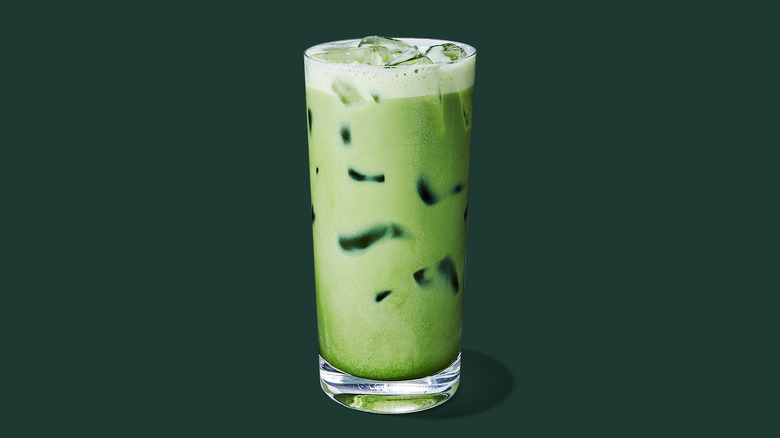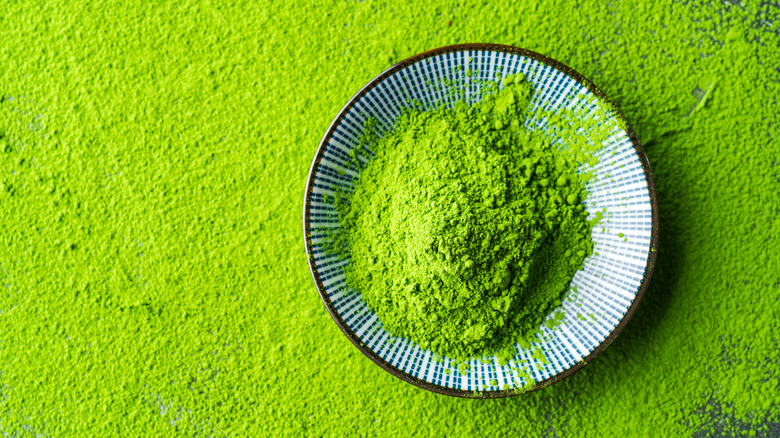The Type Of Matcha Starbucks Uses May Not Be What You Expect
CORRECTION 2/27/24: A previous version of this article shared the rumor Starbucks uses Sencha tea in its matcha powder mix. Starbucks informed Tasting Table this is not the case.
It's possible that the first time you heard of matcha was when you tried it at Starbucks back in 2006 when the chain launched its Green Tea Latte. Over the past 25 years, sales for this caffeinated, grass-colored powder have climbed to over $10 billion in the U.S., according to Global Edge, so it's likely you've dabbled in different types by now. But if you still find yourself reverting to Starbucks' array of matcha drinks, which have now expanded to include a Matcha Crème Frappuccino and Iced Matcha Lemonade, your palate may be able to tell that the powder the chain uses isn't quite the same as in other coffee shops.
What Starbucks calls its "matcha powder scoops" are essentially a sweetened blend, featuring sugar as the first ingredient and ground Japanese green tea as the second. Allegedly, the U.S. blend contains more sugar than tea (Canada's is unsweetened). Technically, you wouldn't call this mixture straight matcha, since the powder traditionally just consists of finely ground green tea leaves. As for where Starbucks sources its green tea from, the chain informed Tasting Table it sources "shade-grown milled green tea" for its matcha from Korea, Japan, and China.
Starbucks' matcha scoops are pre-sweetened
If you're trying to recreate Starbucks' matcha beverages at home, note that a mixture of matcha powder and milk will likely end up less sweet than what you'd get in the store, as matcha powder is generally unsweetened. If you omit a sweetener from your latte at home, you'll likely get a much earthier flavor, but you can amp up the sweetness by adding coconut sugar, honey, or maple syrup to taste to try to replicate your favorite Starbucks bevy.
The quality of a matcha latte also comes down to the type of powder you use. The cream of the crop is ceremonial-grade powder, which comes from the first harvest of the leaves, followed by culinary grade from the second harvest. Since Starbucks incorporates its matcha in a blend, it may not be using that high-end version, but if you're whipping up lattes at home, look for a ceremonial-grade tin with only one ingredient that sources its leaves from Japan. This will result in a powder that is brighter and fresher tasting than other matcha grades. And if you do venture into Starbucks to get your green tea drinks, just keep in mind that any matcha beverages will come pre-sweetened.

